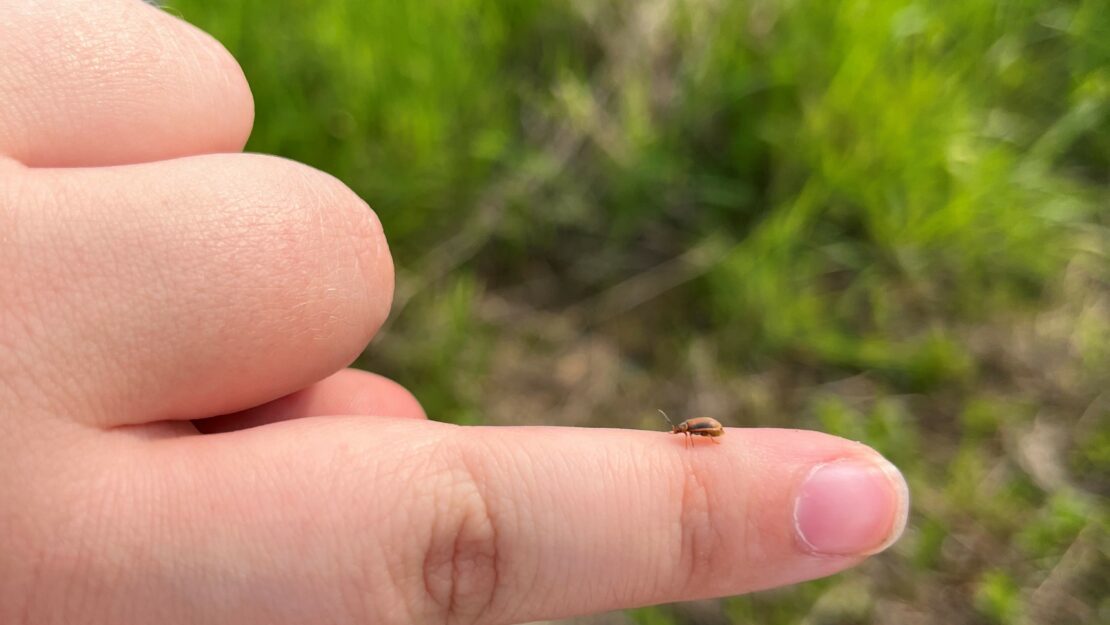Bugs Don’t Bug Me (Anymore)

By Alexis Jost, Aquatic Invasive Species Specialist Individual Placement /AmeriCorps Member placed at Minnesota Department of Natural Resources, Ecological and Water Resources Division.
When you serve with the Conservation Corps, you hear from folks that you will learn a lot in a short amount of time. They’re right! From gaining technical skills to becoming a human field guide, the hosts, sites, and great outdoors will teach you more than one could possibly imagine.
Something I’ve learned this summer is to have an appreciation (or dare I say affinity) for bugs.
The program I’m serving with is aimed to gain a better understanding of our state’s Purple Loosestrife population through data collection and public outreach. Not only am I looking for and recording the presence of purple loosestrife, I’m also looking for the presence of the beetles that eat it.
Golden Loosestrife Beetles (Galerucella pusilla) and Black Margined Loosestrife Beetles (Galerucella calmariensis).

These beetles are magnificent! They’re nature’s perfect invasive species management solution. The beetles eat the loosestrife only, and their larvae hatch and work their way into the stalk of the plant. From there, they destroy the plant, preventing the loosestrife from going to seed. It takes some time, as the loosestrife has incredible seed output, but they are surely efficient little guys.
Since joining the program, I have collected many of these beetles. I even housed them for a weekend! It felt like taking home the class pet. I watched them interact with each other. They mate, they eat their purple loosestrife, and they nap. Something really cute that I’ve noticed they do is they clean themselves! They’ll take their little beetle arms (very technical) and run them down the length of their antennae. It’s so cute!
Learning about these specific beetles has made me notice other bugs more. I wonder about their roles in our ecosystem, what they eat- or what eats them- and if they also have great hygiene. When I used to find a new bug on me in the field, I would quickly flick them off my arms and legs, hoping to never meet them again. However, these days I will carefully examine it, take note of what it looks like, what it might be doing, and delicately return it to the earth.
I never thought I’d be a bug-loving gal, but much like us Corpsmembers learn a lot about the environment, we also learn a lot about ourselves too.
The next time you find a bug, I encourage you to give it a second look. You never know how amazing it be!